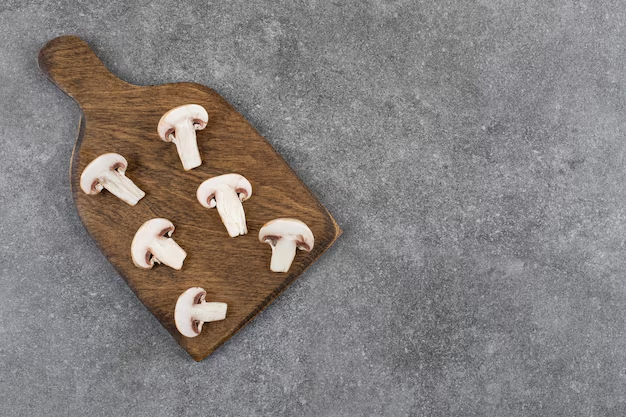Discovering the Shelf Life of Shiitake Mushrooms: How Long Do They Last in the Refrigerator?
Shiitake mushrooms are celebrated for their earthy flavor and distinctive texture, making them a popular choice in cuisines worldwide. Whether you're a culinary enthusiast experimenting with new recipes or simply enjoy adding a savory touch to your meals, understanding the shelf life of shiitake mushrooms is crucial. Proper storage not only ensures you can enjoy their full flavor but also prevents food waste. So, how long do shiitake mushrooms last in the refrigerator, and what are the best practices for keeping them fresh? Let's delve into this topic, exploring the nuances of shiitake mushroom storage that every home cook should know.
🍄 The Basics of Shiitake Mushroom Storage
Shiitake mushrooms, like many fresh produce items, are sensitive to their storage environment. They require specific handling to maintain their quality and flavor. Here are the fundamental principles to keep in mind:
- Storage Temperature: Shiitake mushrooms thrive in the cool temperatures of the refrigerator. Stored at around 32 to 40 degrees Fahrenheit, mushrooms can maintain their freshness longer.
- Moisture Control: Mushrooms are prone to moisture absorption, which can lead to a soggy texture and hasten spoilage. It's important to keep them dry.
- Packaging: Using the right packaging is key. A breathable container or a paper bag is ideal to allow excess moisture to escape.
How Long Can Shiitake Mushrooms Last in the Refrigerator?
When properly stored in the refrigerator, shiitake mushrooms can last anywhere from 7 to 10 days. However, their longevity can be influenced by several factors, including their condition when purchased and how they are stored.
Signs of Freshness
Before storing, it's essential to assess the mushrooms' initial condition. Fresh shiitake mushrooms typically have:
- Firm Caps: The caps should be broad and firm, not slimy or shriveled.
- Uniform Color: Look for a consistent brown color with no dark spots or discoloration.
- Pleasant Aroma: They should have a nice, earthy smell without an overpowering, ammonia-like odor.
Recognizing Spoilage
Knowing when shiitake mushrooms have gone bad is equally important to prevent any potential foodborne illnesses. Spoiled mushrooms often exhibit:
- Slimy Texture: Mushrooms become slimy when they start breaking down.
- Foul Smell: A pungent or sour aroma indicates spoilage.
- Visible Mold: Any signs of mold or significant discoloration are clear indicators to discard them.
🛠️ Top Techniques for Extending Freshness
To make the most out of your shiitake mushrooms, follow these storage tips:
1. Choose the Right Packaging
To balance moisture retention and airflow, use:
- Paper Bags: A simple paper bag allows mushrooms to breathe, reducing moisture build-up.
- Perforated Containers: Plastic containers with small holes can also be effective as long as they allow air circulation.
2. Wrap Gently
If only a few mushrooms perish quickly:
- Cloth Towels: Wrapping them in a paper or cloth towel helps absorb excess moisture while providing slight protection.
3. Store Wisely
- Refrigerator Crispers: Use the vegetable crisper drawer as it provides the ideal environment with slightly higher humidity.
- Avoid Freezing: Freezing fresh shiitake mushrooms can alter their texture since they contain a high water content.
Cooking and Prepping: Extending Use Beyond Freshness
Even if your mushrooms aren't at their peak condition, there are delicious ways to use them:
1. Drying Shiitake Mushrooms
Drying is a great technique to extend their shelf life significantly:
- Air Drying: Simply thread them onto a string and hang them in a dry, well-ventilated area.
- Dehydrators: Utilize a food dehydrator for a quicker and more uniform process.
2. Cooking
- Sautéing: Slightly older mushrooms can be sautéed as heat eliminates excess moisture.
- In Soups or Stews: The robust flavor of shiitakes enriches broths, masking minor imperfections.
🧑🍳 Creative Culinary Uses for Preserved Shiitake Mushrooms
Once you've gone to the effort of preserving your shiitake mushrooms through drying or cooking, it's time to enjoy them in delightful dishes:
Dried Mushroom Delicacies
- Umami-Rich Broth: Rehydrate dried shiitake mushrooms and use the soaking water as a flavor-packed base for soups or risottos.
- Flavorful Rice Dishes: Add chopped dried mushrooms to rice for an extra punch of savory goodness.
Cooked Mushroom Mixes
- Savory Stir-Fries: Incorporate cooked shiitakes into stir-fries for depth and umami.
- Mushroom Sauces: Blend sautéed shiitakes into creamy sauces to serve over pasta or meats.
📝 Quick Reference Guide
Here's a handy summary to help you quickly navigate shiitake mushroom storage and usage:
🗂️ Storage Tips:
- Paper Bags: Allow mushrooms to breathe.
- Cloth Towels: Wrap for moisture absorption.
- Ideal Location: Use the refrigerator crisper.
⚠️ Spoilage Warning:
- Sliminess: Indicates breakdown.
- Off Odor: A sour or pungent smell.
🥘 Usage Ideas:
- Broths & Soups: Perfect for shiitake depth.
- Sautéing: Ideal for slightly older mushrooms.
By following these guidelines, you'll not only preserve the quality of your shiitake mushrooms but also enhance their flavor in your culinary creations. Remember, the key to extending their usability lies in how they're stored and the creative ways they can be re-invented in the kitchen. With these insights, you're well-equipped to make the most of this wonderful ingredient, minimizing waste and maximizing enjoyment. Enjoy your culinary journey with shiitake mushrooms!
